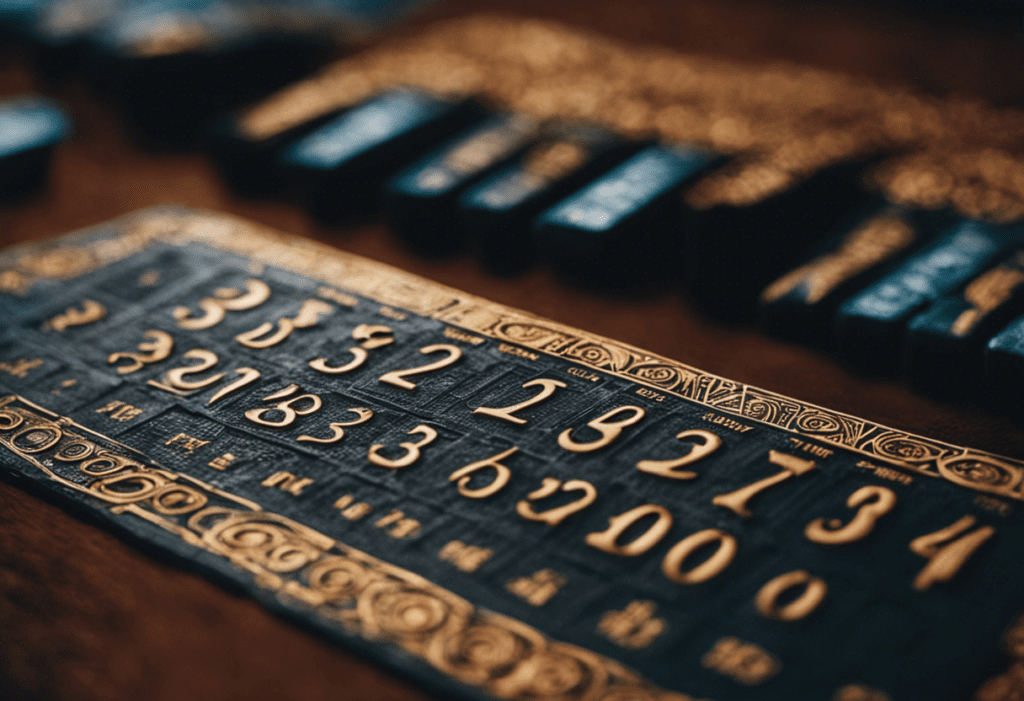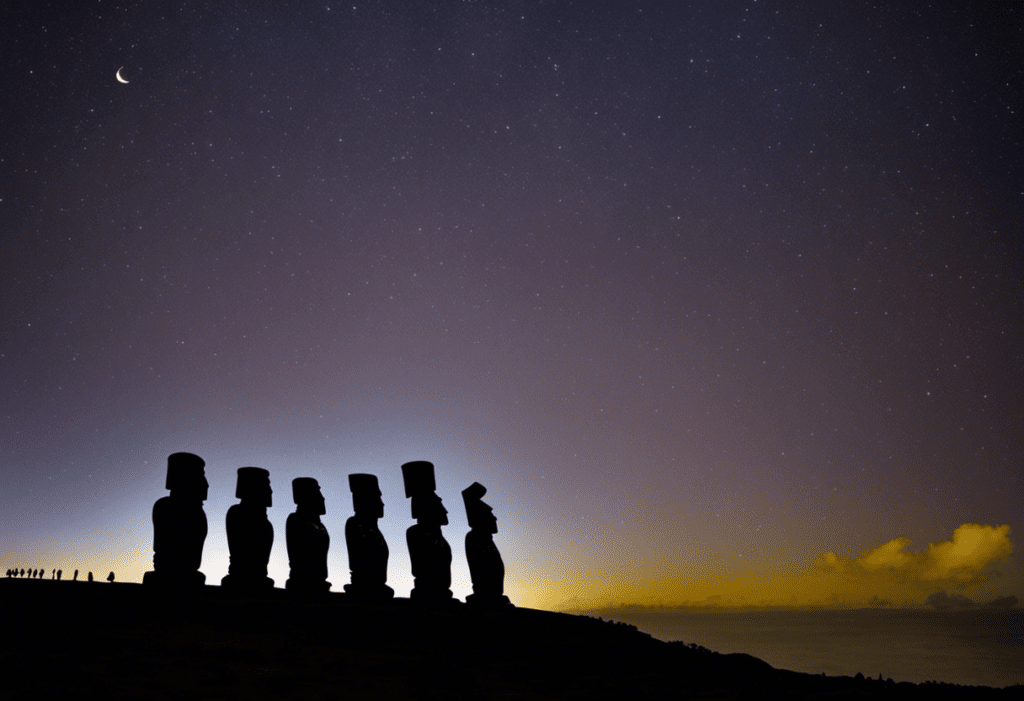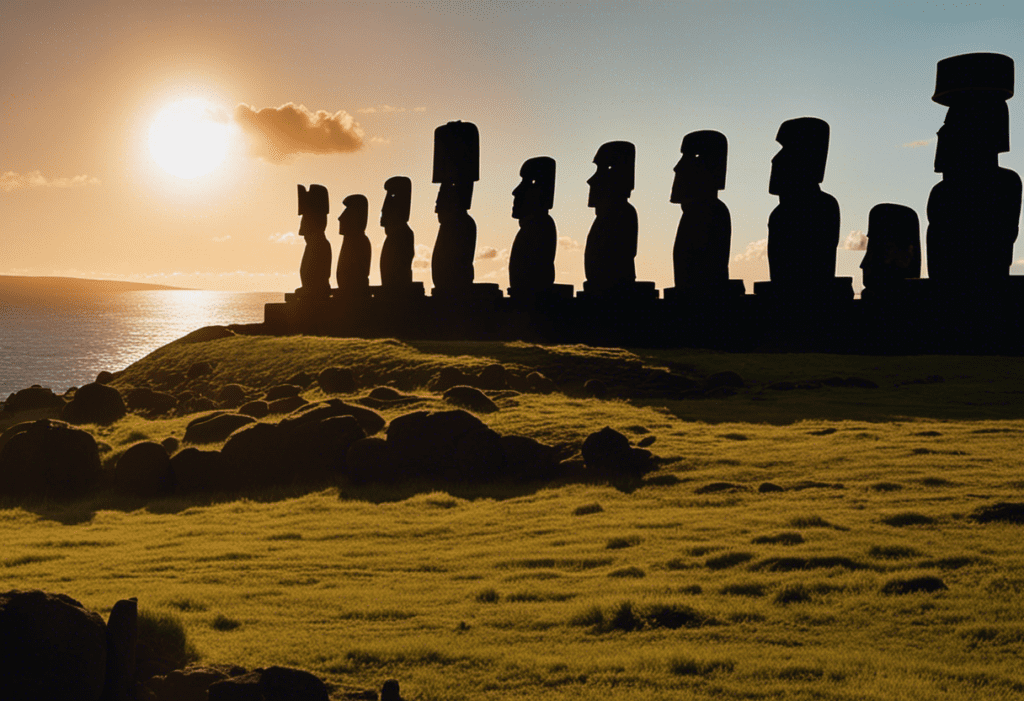Easter Island Timekeeping: Understanding the Rapa Nui Calendar provides an in-depth exploration of the timekeeping system used by the Rapa Nui civilization on Easter Island. This article examines the origins, principles, components, rituals, and festivals associated with the calendar, shedding light on its decline, revival, and lasting legacy.
By using parallelism, the introduction engages readers and invites them to learn about the ancient and mysterious timekeeping practices of Easter Island.
Join us on a fascinating journey through the Rapa Nui Calendar.
Key Takeaways
- The Rapa Nui calendar was developed based on a lunar-solar system and played a significant role in tracking time from the 13th to the 18th century.
- Celestial alignment and solstices were observed to mark changing seasons, agricultural cycles, and important cultural events and ceremonies.
- Moai statues served as markers for tracking time and symbolized the connection between celestial bodies and the earthly realm.
- Lunar phases were used to organize agricultural tasks, religious ceremonies, and fishing activities, and played a crucial role in determining the timing of rituals.
Origins of the Rapa Nui Calendar
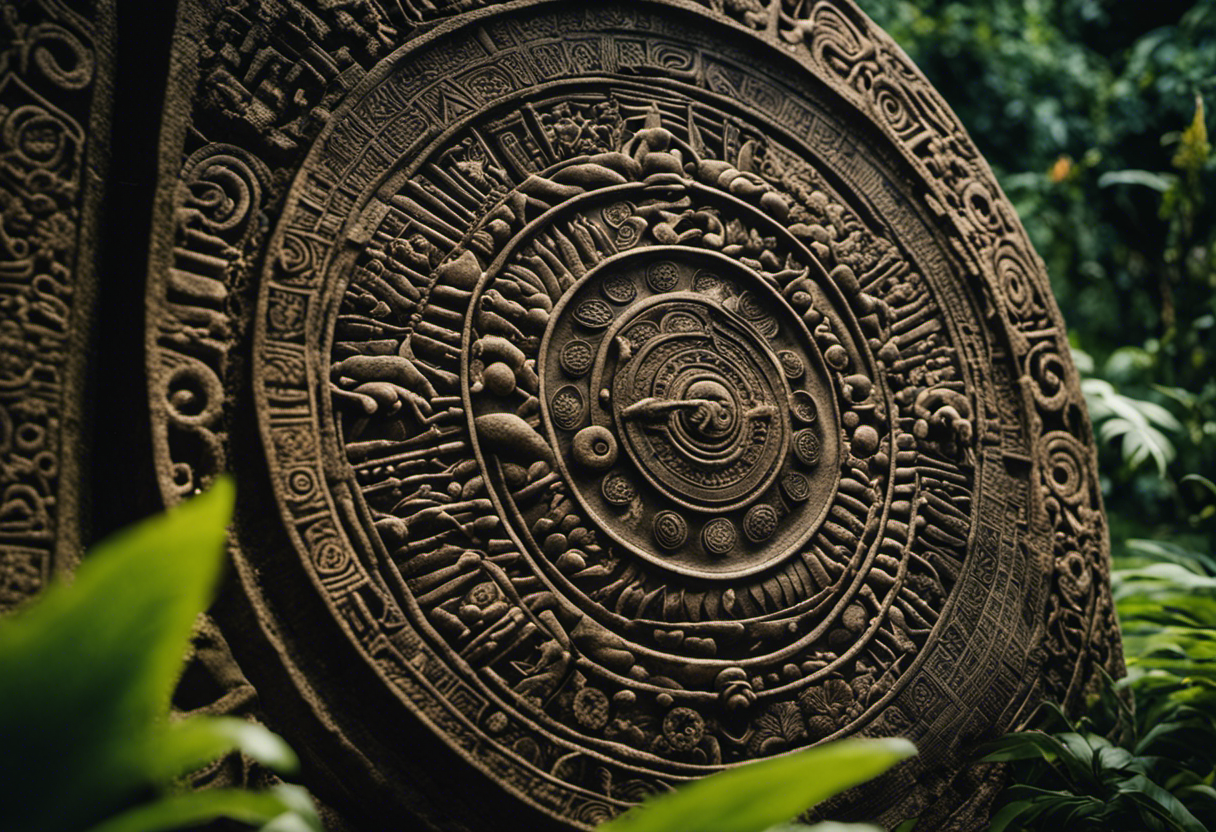

The Rapa Nui calendar has its roots in the ancient civilization that once inhabited Easter Island. This calendar holds great cultural significance for the Rapa Nui people, as it not only helped them keep track of time but also played a vital role in their religious and agricultural practices.
The Rapa Nui calendar was developed based on a lunar-solar system, which demonstrated the islanders’ profound understanding of astronomy and its connection to their daily lives.
According to archaeological evidence, the Rapa Nui calendar was created around the 13th century and remained in use until European explorers arrived in the 18th century. The famous stone statues of the island, known as moai, are believed to have been aligned with specific celestial events, emphasizing the importance of astronomical observations in the development of the calendar system. Additionally, petroglyphs found on the island depict various celestial bodies, further highlighting the cultural significance of astronomy in Rapa Nui society.
The Rapa Nui calendar consisted of several cycles and subcycles, including the 30-year ritual calendar and the 260-day agricultural calendar. These calendars were utilized to determine significant events such as planting and harvesting seasons, religious ceremonies, and social gatherings. The meticulous tracking of time allowed the Rapa Nui people to effectively manage their resources and maintain a sustainable way of life on the isolated island.
Principles of Rapa Nui Timekeeping


The principles of Rapa Nui timekeeping were based on the alignment of celestial bodies and the observation of solstices, as well as the use of Moai statues as markers for tracking time and events.
The Rapa Nui people also paid close attention to lunar phases, which played a significant role in their calendar system. By understanding the movements of the stars and the changing seasons, they were able to determine the best times for agricultural activities.
The Moai statues, in addition to their religious significance, served as practical tools for marking the passage of time.
Celestial Alignment and Solstices
Celestial alignment and solstices have a significant role in the principles of Rapa Nui timekeeping. The Rapa Nui people, who lived on Easter Island, carefully observed the celestial bodies to track time and determine important cultural events. They paid close attention to celestial alignment, especially during the equinoxes and solstices, to mark the changing seasons and agricultural cycles.
During the equinoxes, when the sun is directly above the equator, the Rapa Nui would observe the alignment of the sun with specific markers on the island, such as the famous Moai statues. These alignments helped them determine the precise dates for planting and harvesting crops.
Likewise, during the solstices, when the sun reaches its highest or lowest point in the sky, the Rapa Nui would use the alignment to signify significant cultural events and ceremonies. The careful observation and understanding of celestial alignment and solstices enabled the Rapa Nui to develop a comprehensive and efficient timekeeping system.
Moai as Time Markers
The Rapa Nui people of Easter Island had a sophisticated timekeeping system that relied on observing celestial alignments during the equinoxes and solstices. Central to this system were the Moai statues, which served as significant markers for tracking time.
These imposing statues, with their distinct features, symbolized the connection between the celestial bodies and the earthly realm. By carefully positioning and orienting the Moai statues, the Rapa Nui could track important astronomical events like the rising and setting of the sun and stars.
This allowed them to determine the passage of time and mark significant agricultural and ceremonial occasions. The integration of the Moai statues into the Rapa Nui’s timekeeping practices showcases their advanced understanding and utilization of celestial phenomena.
Role of Lunar Phases
The Rapa Nui people on Easter Island relied on the phases of the moon to keep track of time and plan their activities. By observing the lunar cycle, they were able to organize their agricultural tasks, fishing expeditions, and religious ceremonies.
The influence of lunar phases on the Rapa Nui timekeeping system can be seen in four key ways:
- Calendar synchronization: The Rapa Nui aligned their lunar calendar with the solar year, ensuring that important events occurred at specific times of the year.
- Seasonal changes: Monitoring the lunar phases allowed the Rapa Nui to accurately predict the changing seasons, enabling them to plan their agricultural activities accordingly.
- Fishing patterns: The Rapa Nui used the lunar cycle to identify the best fishing times, as certain lunar phases were associated with optimal fishing conditions.
- Ritual ceremonies: Lunar phases played a crucial role in determining when the Rapa Nui conducted their religious rituals, often coinciding with significant lunar events.
Components of the Rapa Nui Calendar
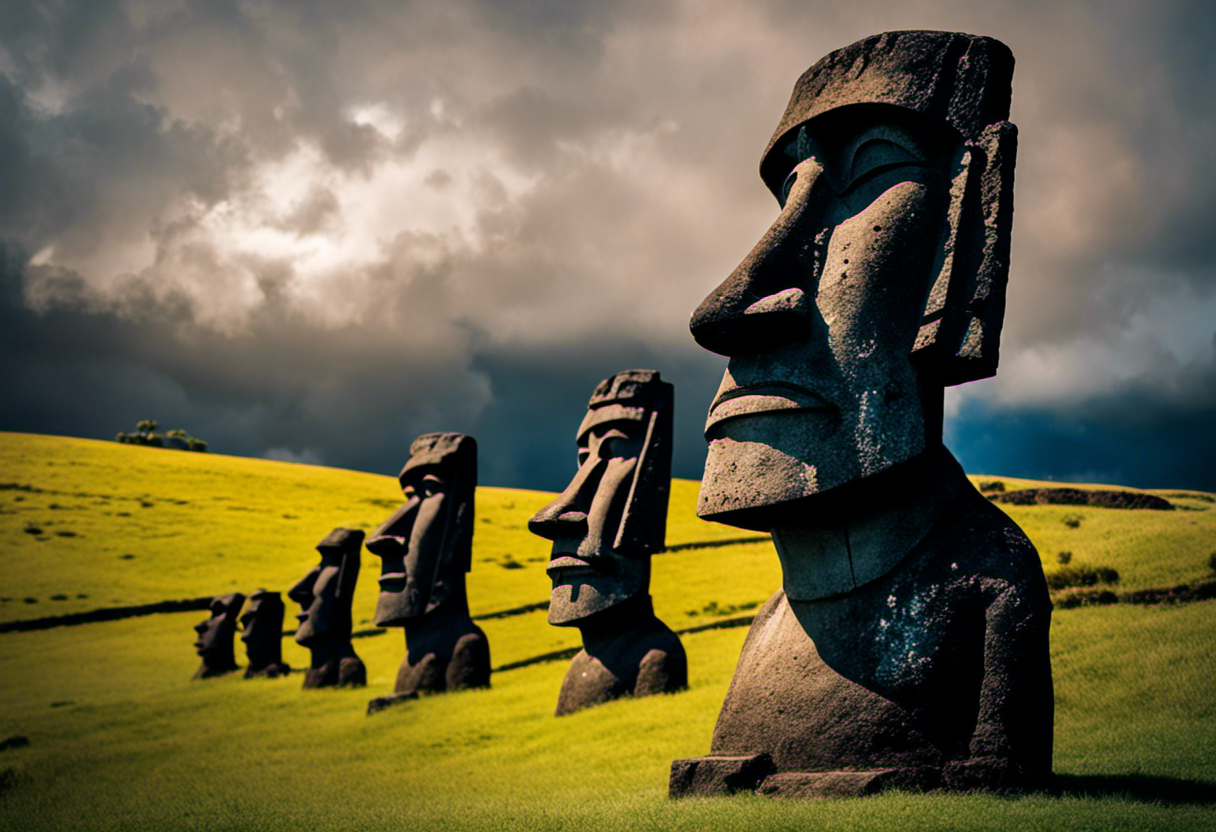

The Rapa Nui calendar is a fascinating combination of astronomical observations and cultural practices. It originated from the ancient Polynesian settlers who arrived on Easter Island around 1200 AD. These settlers had a deep understanding of celestial movements and their significance in timekeeping. The Rapa Nui calendar revolves around the observation of the sun, moon, stars, and the positioning of important landmarks on the island.
Astronomical observations played a crucial role in determining the components of the Rapa Nui calendar. The Rapa Nui people closely observed the path of the sun, which helped them establish the solstices and equinoxes. These astronomical events marked important dates in their calendar, signaling the change of seasons and guiding agricultural activities.
The moon also had a significant role in the Rapa Nui calendar. The Rapa Nui people developed a lunar calendar to track the lunar phases and align them with their cultural practices. The observation of lunar phases was important for determining the optimal time for fishing, planting crops, and conducting religious ceremonies.
In addition to astronomy, the Rapa Nui calendar incorporated cultural practices and rituals. The positioning of important landmarks, such as the famous Moai statues, was taken into account. The alignment of these statues with celestial events symbolized the connection between the heavens and the earth.
Rituals and Festivals in the Rapa Nui Calendar


The Rapa Nui calendar serves as more than just a timekeeping system. It is the foundation for a vibrant tapestry of rituals and festivals that hold deep symbolic meaning for the Rapa Nui people.
These rituals are not mere spectacles; they are essential for preserving their cultural heritage and identity. One notable festival is the Tapati Rapa Nui, which showcases the community’s artistic, athletic, and spiritual talents.
This celebration also plays a crucial role in passing down traditional knowledge and values to future generations.
Through these festivals, the Rapa Nui people keep their traditions alive and ensure that their cultural legacy continues to thrive.
Symbolic Significance of Rituals
The rituals and festivals in the Rapa Nui calendar hold deep symbolic meaning, reflecting the cultural heritage and spiritual beliefs of the Rapa Nui people. These cultural practices are an integral part of the community’s daily life, serving as a way to connect with their ancestors and show respect for the natural world.
The Rapa Nui calendar includes various festivals, each with its own specific purpose and symbolism. For example, the Tapati Rapa Nui festival celebrates the island’s Polynesian heritage through traditional sports, music, and dance. Another festival, called Haka Pei, tests participants’ bravery and strength as they slide down a steep hill on banana tree trunks.
The Rapa Nui New Year celebration, known as Mata ki te rā, marks the beginning of a new agricultural cycle. Additionally, the Birdman cult ceremony determines the leader of the island for the following year.
These rituals and festivals not only preserve the Rapa Nui cultural identity but also foster a sense of community and spiritual connection with their surroundings.
Traditional Festival Practices
Symbolizing the rich cultural heritage and spiritual beliefs of the Rapa Nui people, traditional festival practices in the Rapa Nui calendar encompass a range of rituals and celebrations. These rituals are deeply rooted in the cultural heritage of the Rapa Nui and play a significant role in preserving their traditions and customs.
The festivals are held at specific times throughout the year and are marked by elaborate ceremonies and performances. One notable festival is the Tapati Rapa Nui, celebrated for two weeks in February. During this festival, the island comes alive with traditional music, dance, and sports competitions.
Another important festival is the Hare Moa, which commemorates the arrival of the first king and involves the ceremonial cooking of a large number of chickens. These traditional rituals and festivals are vital in maintaining the cultural identity and legacy of the Rapa Nui people.
Cultural Preservation Efforts
Preserving Cultural Heritage:
The Rapa Nui people actively participate in a range of traditional rituals and festivals that are deeply ingrained in their calendar. These efforts serve to honor their indigenous traditions and maintain a strong connection to their ancestors.
Let’s explore some examples of the rituals and festivals that hold great significance in the Rapa Nui calendar:
- Tapati Rapa Nui: This annual festival celebrates Rapa Nui culture through a series of competitions encompassing traditional sports, music, dance, and crafts. It fosters cultural pride and unity among the island’s inhabitants.
- Hare Moa: This ritual involves constructing stone houses, known as hare moa, as a tribute to their ancestors. It symbolizes the enduring link between the living and the deceased, as well as the continuity of Rapa Nui traditions.
- Tangata Manu: Also referred to as the Birdman ceremony, this ritual features a competition to select the new Tangata Manu (Birdman). It showcases the spiritual beliefs of the Rapa Nui people and their reverence for nature.
- Rapa Nui New Year: This festival marks the beginning of the Rapa Nui year and is commemorated with feasts, music, and dance. It provides a time for reflection, gratitude, and rejuvenation within the community.
Through these rituals and festivals, the Rapa Nui people ensure the preservation and intergenerational transmission of their cultural heritage.
Decline and Revival of the Rapa Nui Calendar
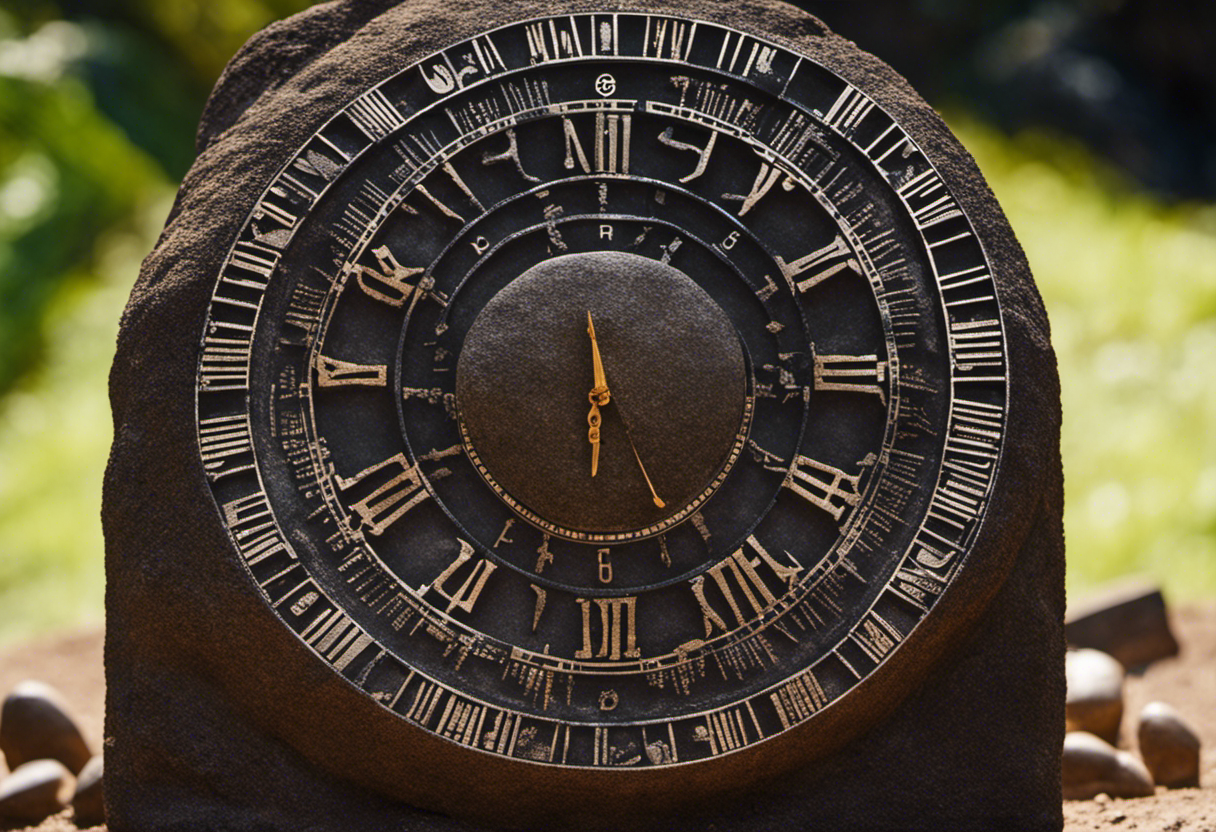

The decline and revival of the Rapa Nui calendar is a testament to the resilience and adaptability of the Rapa Nui people. During the period of European colonization, the Rapa Nui calendar faced a significant decline due to disease, enslavement, and cultural suppression, which decimated the island’s population. As a result, the indigenous knowledge and practices associated with the calendar were at risk.
However, in recent years, there has been a renewed interest in the Rapa Nui calendar, both locally and globally. This revival has been driven by a growing appreciation for indigenous knowledge systems and a desire to reconnect with cultural heritage. The Rapa Nui people have actively worked towards reclaiming and revitalizing their calendar by drawing on oral traditions, archaeological research, and modern interpretation.
Advancements in scientific methods and technology have played a crucial role in the modern interpretation of the Rapa Nui calendar. Researchers have utilized computer models, satellite imagery, and astronomical data to gain a better understanding of the calendar’s functions and significance. These advancements have facilitated a more accurate reconstruction of the calendar’s structure and the identification of key astronomical alignments.
The revival of the Rapa Nui calendar not only provides valuable insights into the ancient timekeeping practices of the island but also fosters a sense of cultural pride and identity among the Rapa Nui people. It serves as a powerful reminder of the enduring legacy of their ancestors and their ability to adapt and persevere in the face of adversity.
Legacy and Influence of the Rapa Nui Calendar
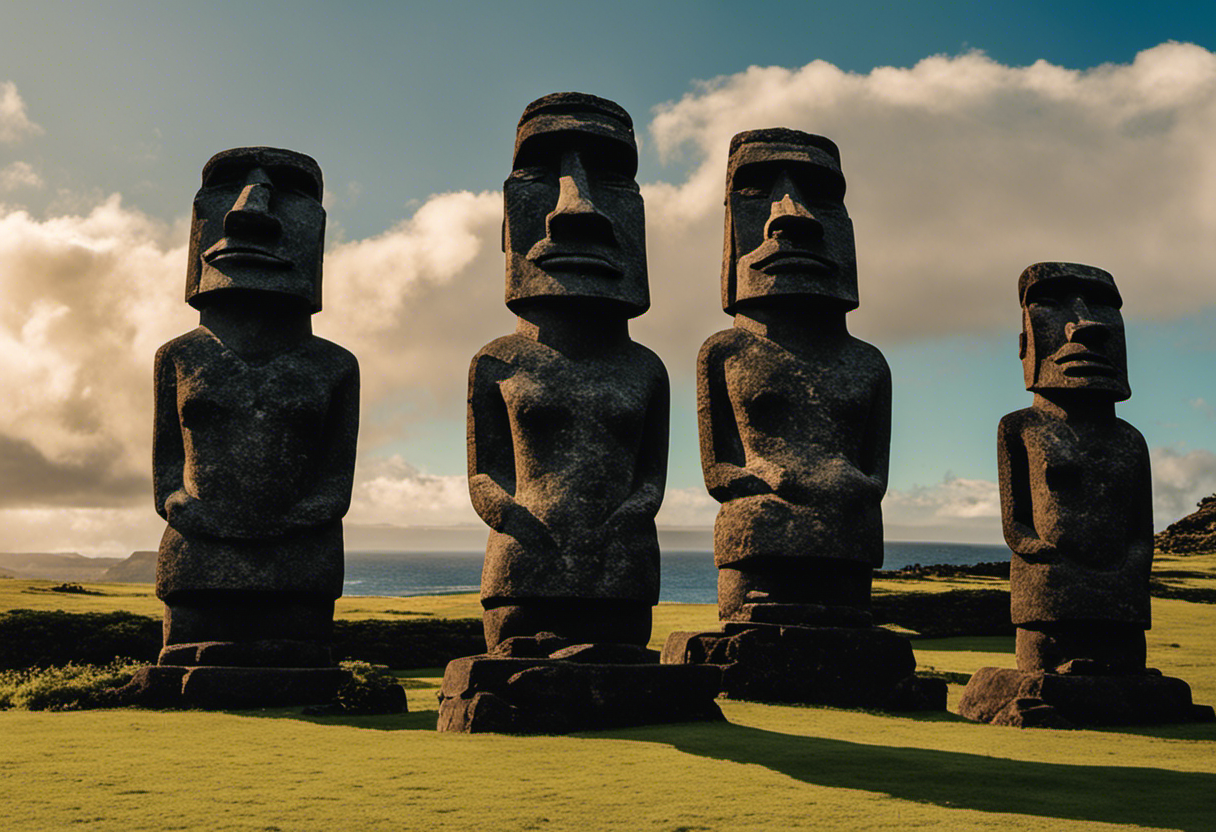

The Rapa Nui calendar has a lasting impact and significant influence on various fields of study. Understanding its cultural significance and preserving its legacy is crucial for comprehending the history and traditions of the Rapa Nui people.
The influence of the Rapa Nui calendar can be observed in several key areas:
- Archaeology: By studying the alignment of the moai statues with celestial events, archaeologists gain valuable insights into the cultural and religious practices of the ancient Rapa Nui civilization.
- Astronomy: The Rapa Nui calendar’s astronomical knowledge and timekeeping methods have contributed to our understanding of celestial movements. It has also influenced the study of indigenous astronomy in different cultures worldwide.
- Cultural Preservation: The Rapa Nui calendar plays a vital role in preserving and revitalizing Rapa Nui culture. It acts as a bridge between the past and present, enabling the Rapa Nui people to reconnect with their ancestral traditions and pass them on to future generations.
- Environmental Conservation: The Rapa Nui calendar’s connection to celestial events and seasonal changes holds implications for environmental conservation. By comprehending the natural rhythms embedded in the calendar, researchers can better manage and protect the fragile ecosystem of Easter Island.
The legacy and influence of the Rapa Nui calendar extend far beyond the island itself. It enriches our understanding of ancient civilizations, astronomy, cultural heritage, and environmental sustainability. Preserving this knowledge ensures that the traditions and wisdom of the Rapa Nui people continue to be cherished and celebrated.


